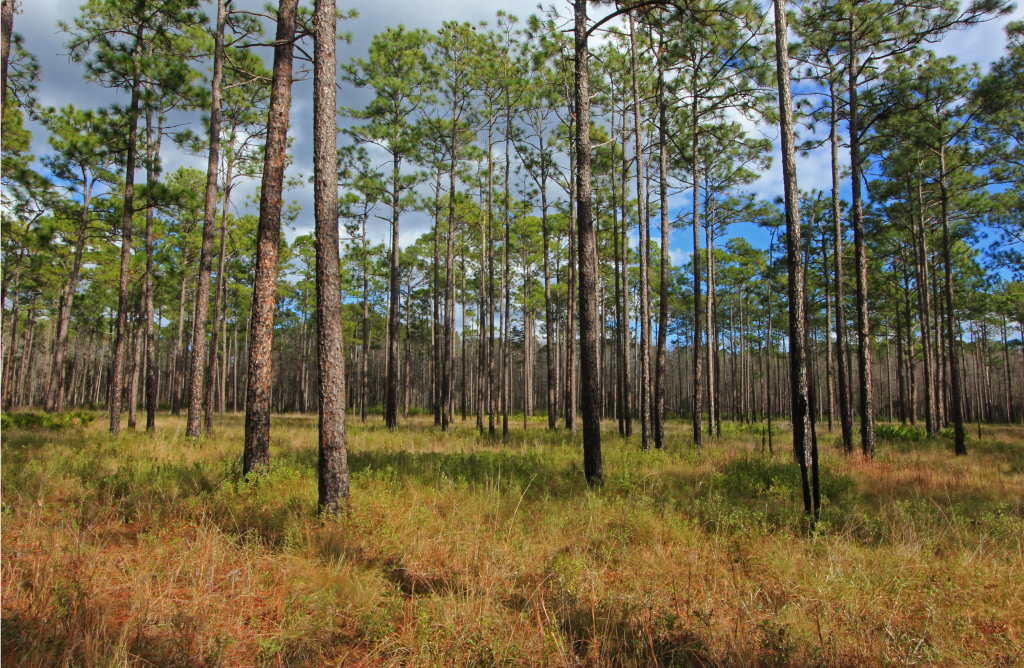Forest Service Releases Drought Science Synthesis

This blog post is posted courtesy of the Southeast Regional Climate Hub
Droughts have occurred frequently in the past and will continue to occur. Some places will see more severe or frequent droughts in the future, while others may not. The ongoing severe droughts in many parts of the US have been widely publicized, but there is a lack of information about how droughts of varying severities affect forests and rangelands. The need for guidance on how to effectively manage the nation’s grasslands and forests for resiliency and adaptation to drought requires advancements in the science and a better understanding of impacts.
The USDA Forest Service, in partnership with Duke University, led a national scientific assessment that synthesizes the impacts of drought on forests and rangelands throughout the US. Written by more than 70 experts from federal agencies, universities, and national labs, this report evaluates appropriate ways to quantify and monitor drought; assesses consequences for forests and rangelands and their values; and identifies potential adaptation strategies. Drought Impacts on U.S. Forests and Rangelands: A Comprehensive Science Synthesis edited by James M. Vose, James S. Clark, Charles H. Luce, and Toral Patel-Weynand.
The assessment’s lead editor, Dr. Jim Vose, shared these take-home messages:
- Drought has always been a major factor shaping forests and rangelands. But recent droughts and warmer temperatures have had an even larger impact on forest and range ecosystems. Insect outbreaks, decreased snowpack, and big wildland fires are some examples of negative impacts of drought on forest and range ecosystems. Recent large ecosystem “diebacks” due to drought have impacted global carbon cycles, including reductions in carbon uptake from the atmosphere in some regions.
- Characterizing drought and detecting drought impacts in long-lived forests and rangelands is considerably more difficult than in agricultural systems. While some impacts are immediate, others may take years, decades, or centuries to be observed. Scientists predict that drought and warmer temperatures may accelerate tree and shrub death, changing habitats and ecosystems and favoring drought-tolerant species.
- Although there is some uncertainty in predicting future droughts, most model projections suggest that some regions will become drier and most will experience greater variation in precipitation. Even if current drought patterns are unchanged, warmer conditions will amplify drought effects.
- Drought and warmer temperatures are likely to increase risks of large scale insect outbreaks and larger wildfires, particularly in the western US.
- Drought and warmer temperatures will likely accelerate mortality of individual trees and shrubs and change suitable habitat. It is uncertain if species migration will keep up with the pace of environmental change, however drier conditions will favor drought tolerant species.
- Drought and warmer temperatures will change carbon, water, and nutrient cycling processes. For example, slower growth, higher mortality, and more frequent and severe disturbances may reduce carbon uptake and storage.
- Values derived from forests — such as timber production, water, and recreation opportunities — are likely to be negatively impacted.
- Rural communities and tribal nations will see large impacts from the loss of ecosystem services provided by forests and rangelands. For example, warming streams and altered flows will affect fish populations important to tribal diets and culture.
The assessment discusses potential management options to reduce drought impacts on forests and rangelands, such as thinning stands to reduce fuel loads, planting or favoring more drought-adapted or disturbance-adapted species, and managing for species diversity. The report does not recommend anything prescriptive, because management decisions should be made at the local level based on existing conditions and management objectives.